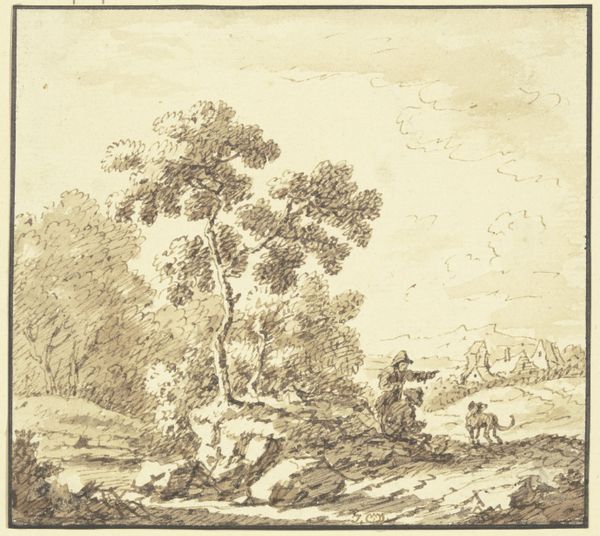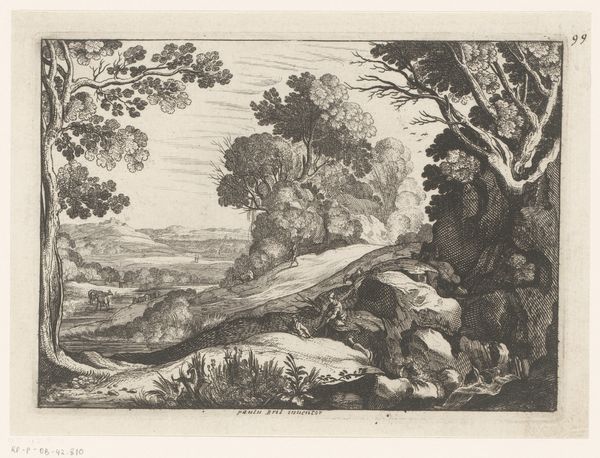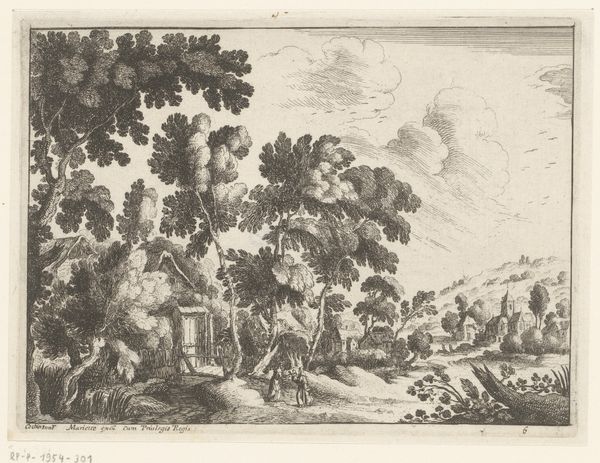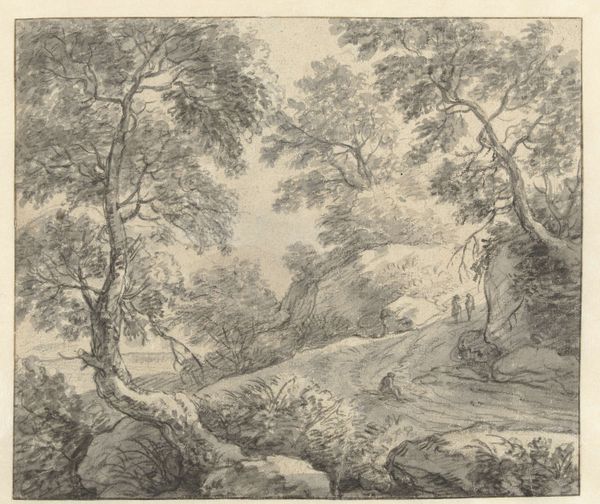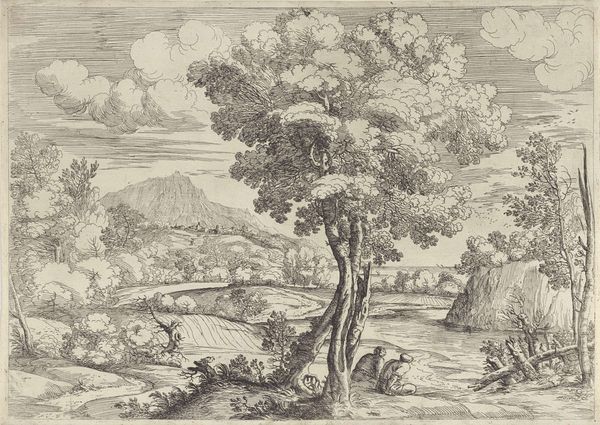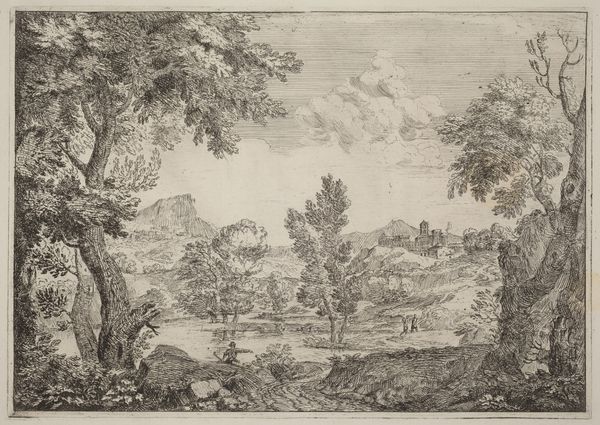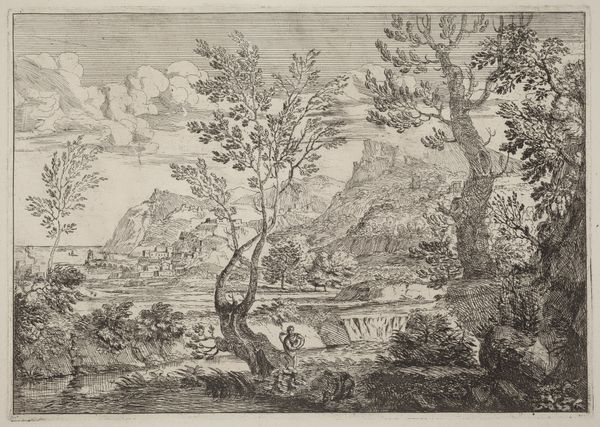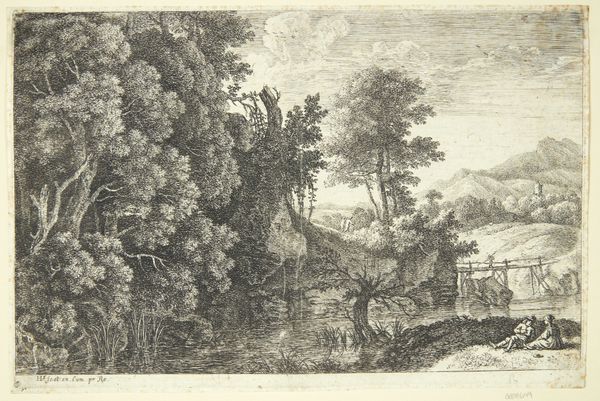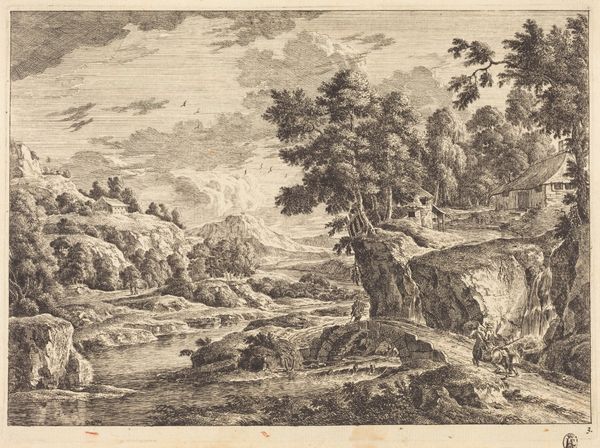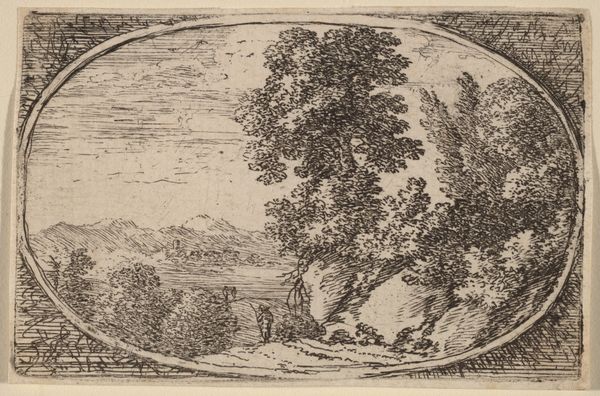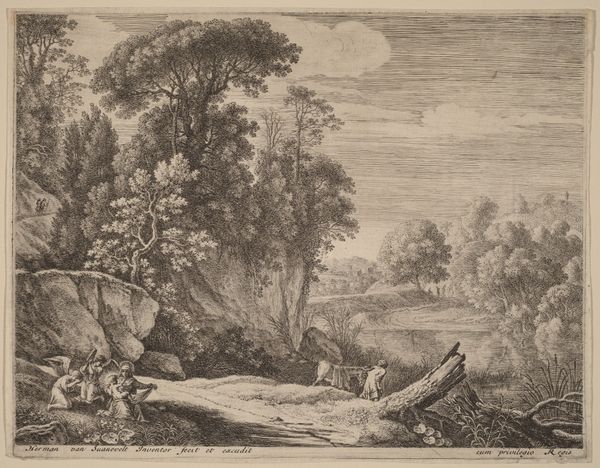
print, etching
#
baroque
# print
#
etching
#
landscape
#
etching
#
figuration
#
line
#
history-painting
#
realism
Copyright: National Gallery of Art: CC0 1.0
Editor: This is Gaspard Dughet’s "Roman Landscape," an etching, though undated. The density of the line work makes me think of both detailed sketches and a kind of quiet observation. What is your take? Curator: The etching is interesting for how it reflects the socio-political fascination with the Roman countryside during the Baroque period. Etchings, because they could be reproduced and disseminated easily, helped to cultivate a particular vision of Rome, particularly its imagined past. Consider how these landscapes often functioned less as accurate depictions and more as carefully constructed settings for historical or mythological narratives, thereby lending prestige to the patrons who collected them. Editor: So, it’s less about capturing the actual landscape, and more about telling a certain story through it? Curator: Exactly. Think about how the inclusion of figures—shepherds, mythological characters, even bandits—within these landscapes enlivened these spaces with layers of meaning and, often, a sense of nostalgic yearning for a simpler, more virtuous past. Do you think that the people in this print are equally part of the scenery, or actors placed on a stage? Editor: I hadn’t thought of it that way, but, yeah, they feel placed rather than a natural element of this scene. So, who would have been buying and circulating these prints at the time? Curator: Primarily, wealthy Europeans on the Grand Tour, eager to acquire visual souvenirs of their travels and demonstrate their refined taste and classical knowledge. This is important to understanding why images like these have become the vision of a past for some. Editor: Fascinating. I see how prints like this really created and perpetuated a particular image of Rome for an elite audience. It changes how I look at these scenes. Curator: Indeed. The relationship between art, power, and public perception is perpetually in motion.
Comments
No comments
Be the first to comment and join the conversation on the ultimate creative platform.


